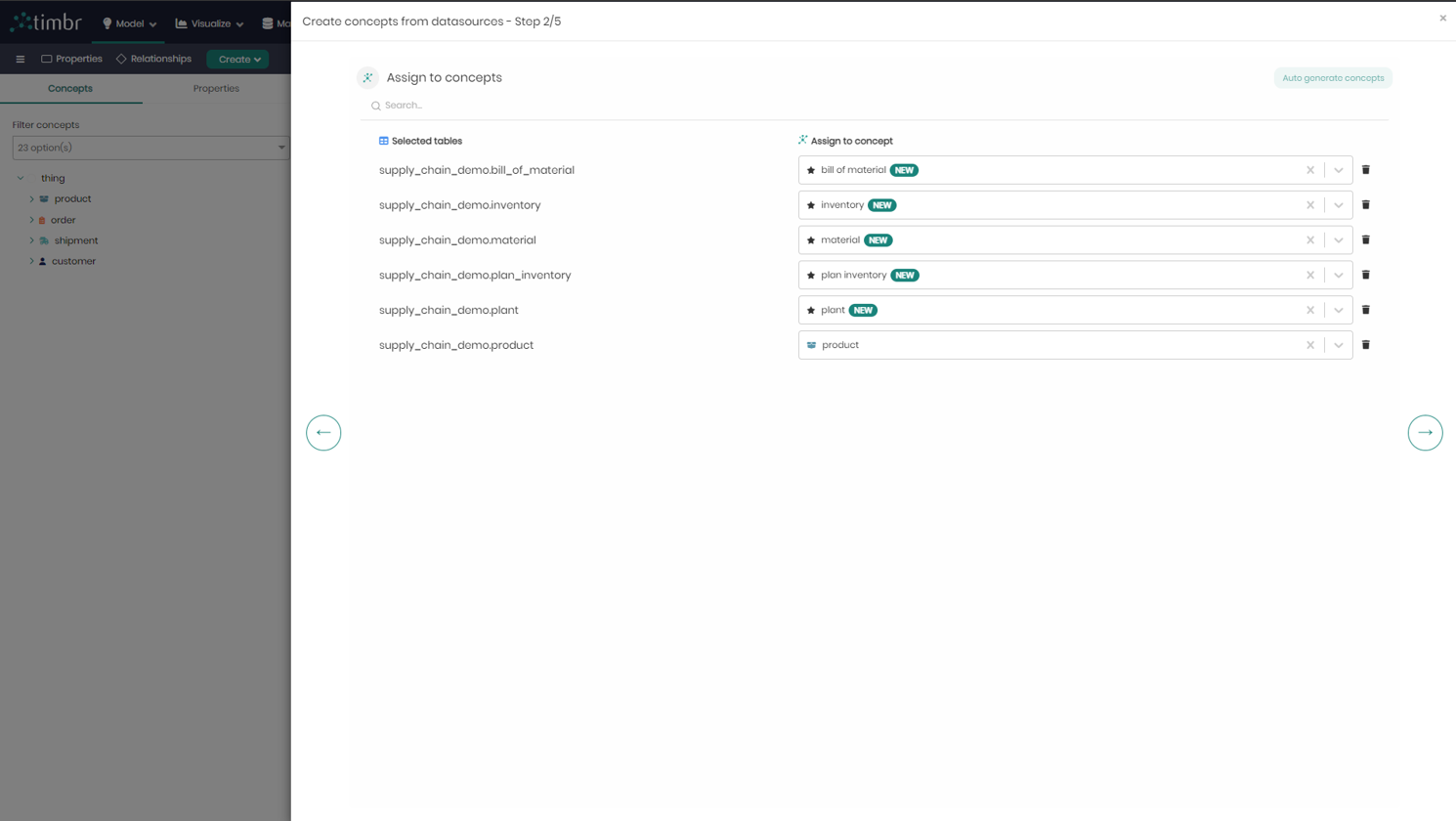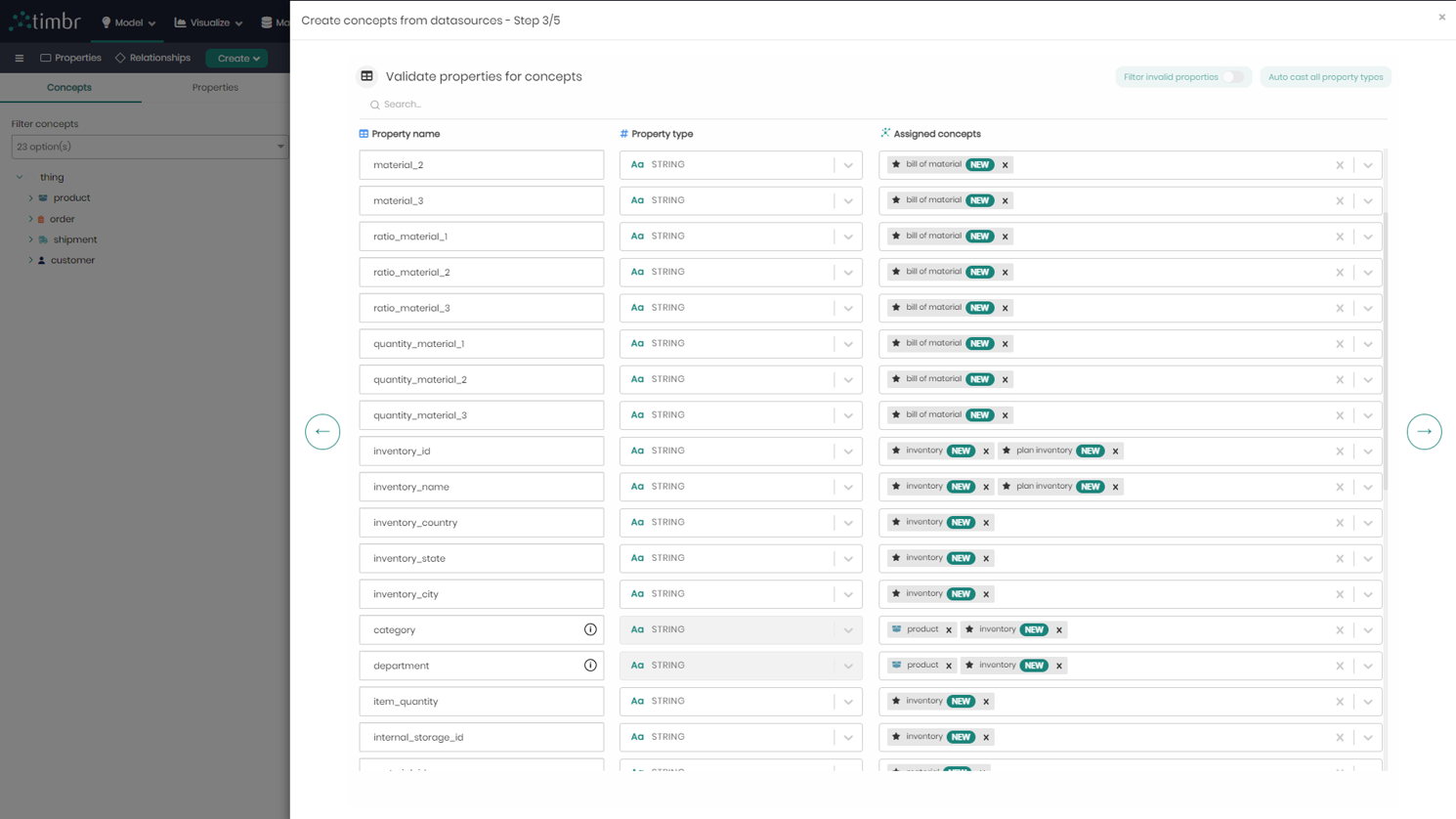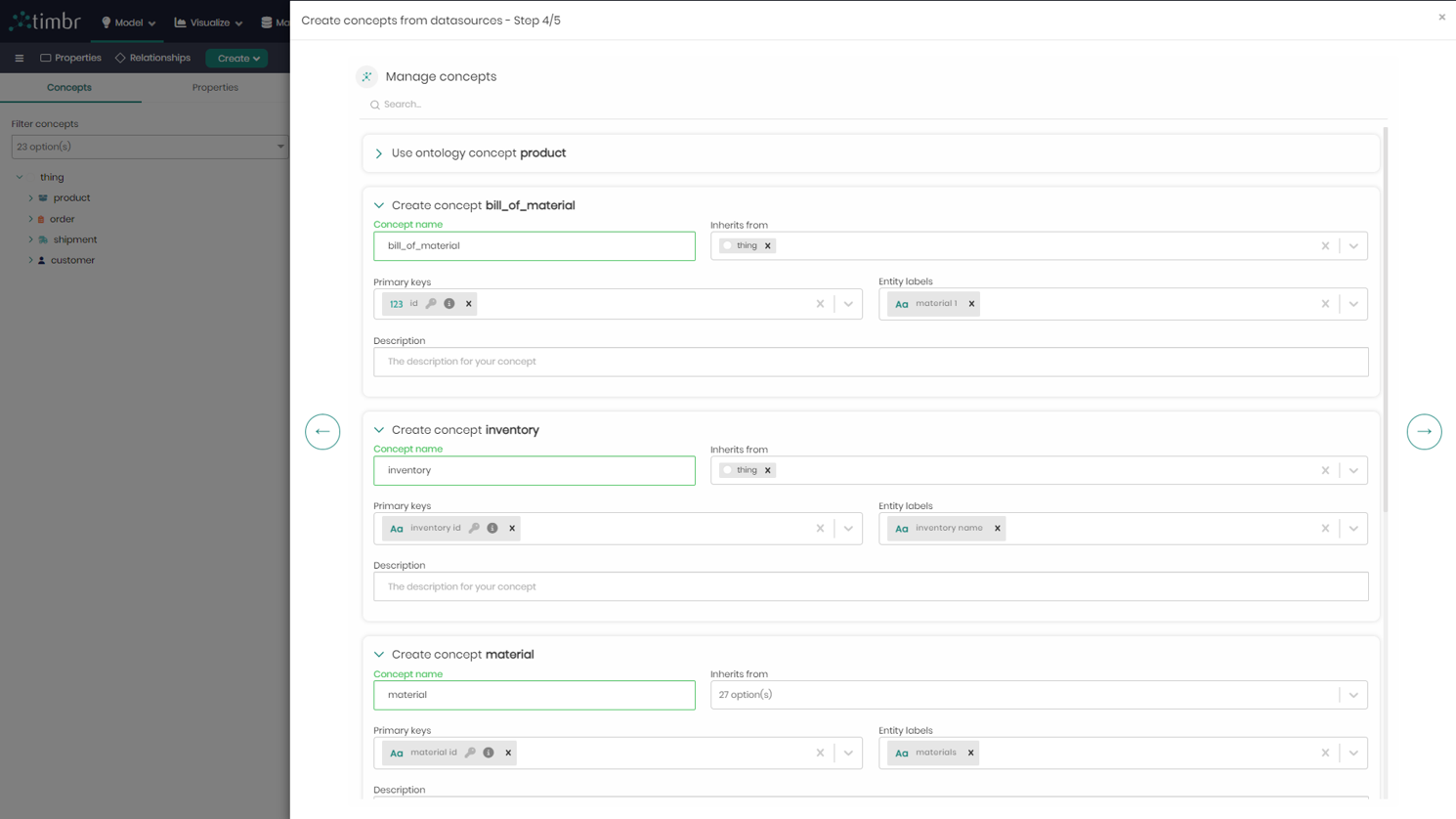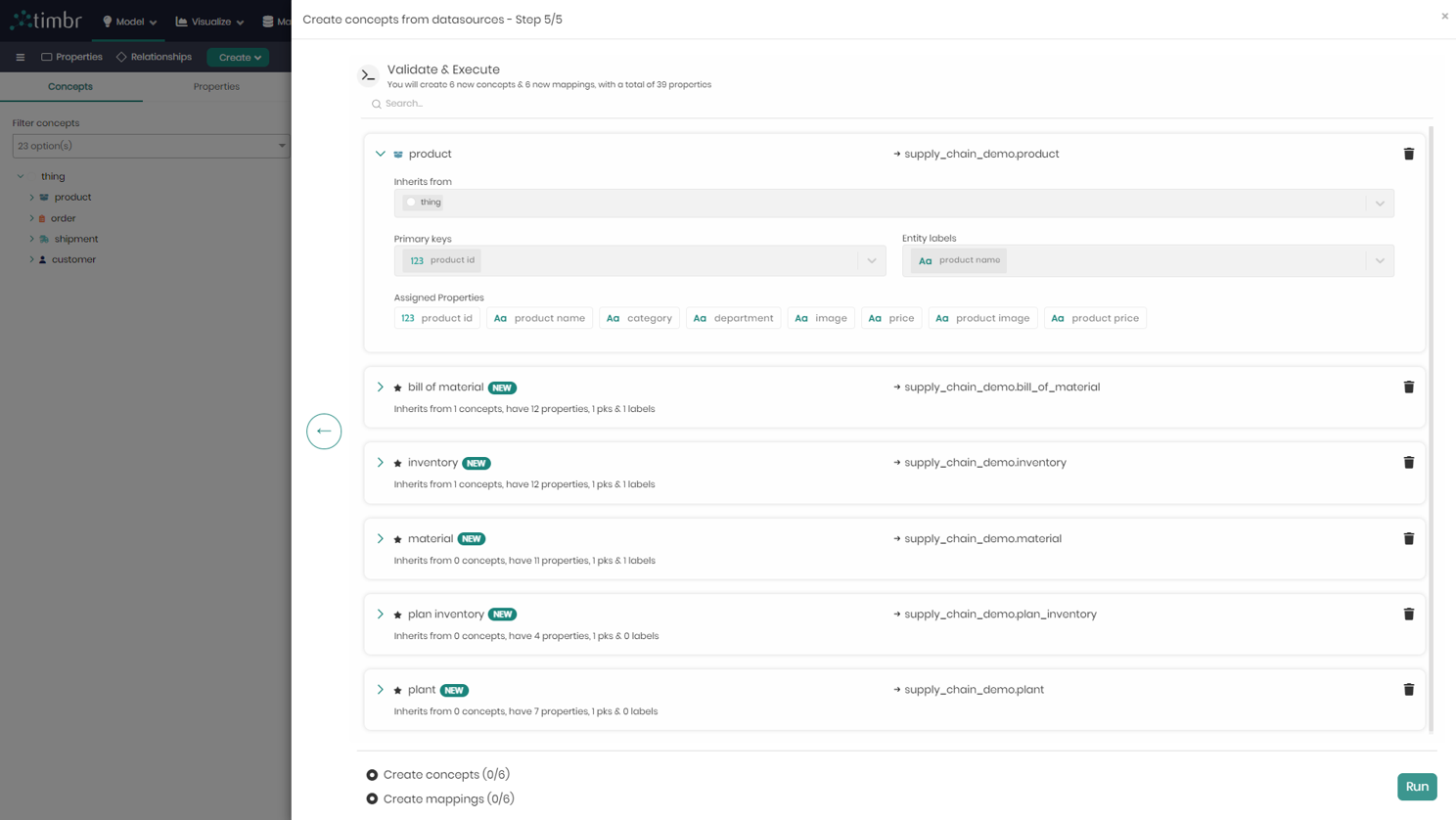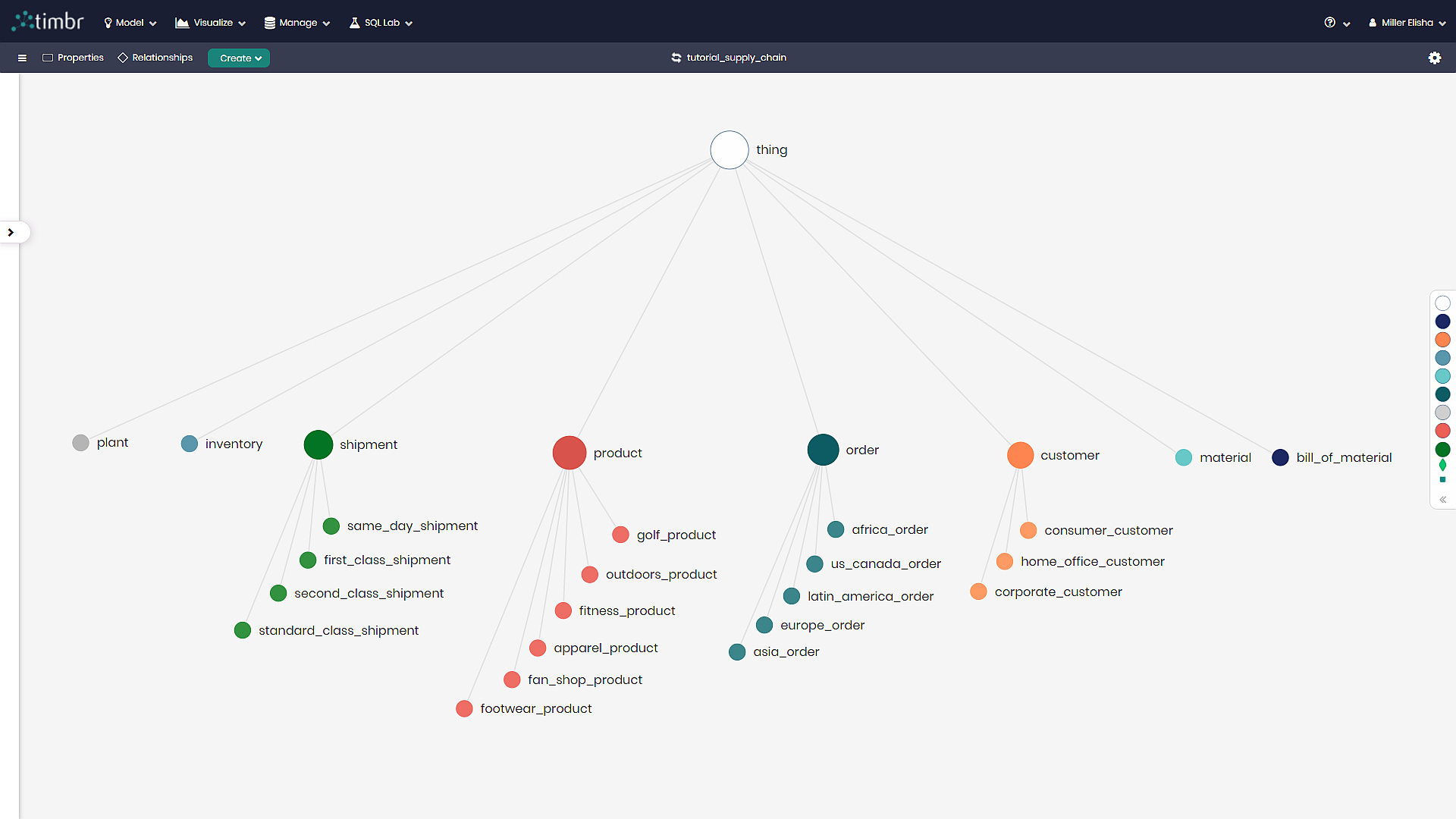How does Timbr accelerate engineering of a semantic layer on top of data? In this article, we explain Timbr’s advanced functionality that enables users to create virtual concepts and data mappings in bulk to provide meaning and unified metrics to data, fast and with minimal effort – without moving or transforming data. In part 2 of this series, we will discuss and demonstrate the bulk creation of relationships between the different entities created in the semantic model, to reduce SQL query size by up to 90% and explore data as a web of relationships.

Introduction
The ability to efficiently turn raw data into actionable knowledge is not just an advantage, it’s a necessity. Businesses are flooded with vast amounts of data, yet the true challenge lies in making this data work for them. That’s where Timbr comes in. Timbr’s intelligent semantic layer virtually transforms big data into a coherent map of information that your business can navigate, share and leverage with ease.
The Power of Bulk Modeling
Traditional data modeling techniques can be painstaking and time-consuming, often requiring a piece-by-piece approach. Timbr challenges this norm by enabling the bulk (virtual) transformation of data into a semantic layer. This means you can take entire datasets, with all their complexity and volume, and convert them into a well-organized, consistent and easily navigable format swiftly and efficiently.
With Timbr, you’re not just modeling data in bulk; you’re transforming it comprehensively. Timbr delves deep into your datasets, extracting concepts and creating mappings that form the backbone of your knowledge graph. From customer interactions to complex supply chain logistics, Timbr handles a wide array of data types, turning disparate pieces of information into coherent, interconnected concepts. This holistic approach ensures that no piece of data is left isolated, providing a complete, 360-degree view of your data landscape.
One of the most significant advantages of bulk modeling is its scalability. As your business grows and your data accumulates, Timbr effortlessly scales to meet your expanding needs. Whether you’re dealing with a few tables or hundreds, Timbr adapts, ensuring consistent performance and reliability. Moreover, this scalability is matched with unparalleled flexibility. Timbr empowers you to customize the modeling process to suit your specific business requirements, whether it’s adjusting properties, refining concepts, or redefining relationships within your data.
So how is it done?
From Data to Concepts
The heart of Timbr’s bulk modeling lies in its ability to generate concepts directly from the data sources. This process happens in Timbr’s intuitive automation wizard that guides you through this transformation in just a few simple steps.
Simple Steps, Significant Results
It begins with selecting the desired schemas and tables from the data source. Whether it’s customer information, order details, or shipment records, Timbr seamlessly creates relevant concepts and mappings, turning your data into a structured, semantic model. All you’ll need to do is simply match your database tables to the corresponding concepts.
Next, you’ll dive into the details by setting properties for these business concepts which function as your table columns in your database, ensuring that each piece of data is accurately represented and categorized in the knowledge graph.
Customization and Control
Flexibility is key. With Timbr, you have the control to edit property types, remove unnecessary attributes, or add new ones. This customization extends to setting Primary Keys, Entity Labels, and even adding descriptions to each concept, ensuring that your data model perfectly aligns with your business needs.
Comprehensive Overview and Validation
After customizing your concepts with the relevant properties, before finalizing, Timbr provides a comprehensive overview of the model you’re about to create. This step ensures that everything is in place and allows for any last-minute adjustments.
When ready and RUN is clicked, In just a few steps, what was once a complex database becomes a structured, easily navigable knowledge graph.
Conclusion
In this part 1 we’ve shown Timbr’s efficiency to turn complex datasets into virtual knowledge graphs in minutes. With its scalability and user-friendly interface, Timbr caters to businesses of all sizes, making data modeling accessible to everyone at any level.
In part 2 we explore how Timbr enables users to create bulk relationships that connect the entire data in the knowledge graph.
We encourage you to explore the power of Timbr’s automatic modeling in action. Check out our tutorial video for a comprehensive guide on harnessing the full potential of automatic modeling.
How do you make your data smart?
Timbr virtually transforms existing databases into semantic SQL knowledge graphs with inference and graph capabilities, so data consumers can deliver fast answers and unique insights with minimal effort.

